The U.S. Expands West

In 1801, the United States under the Constitution was very young — only about 12 years old. And compared to its size today, the country was very small.
By Kelly Jean Kelly
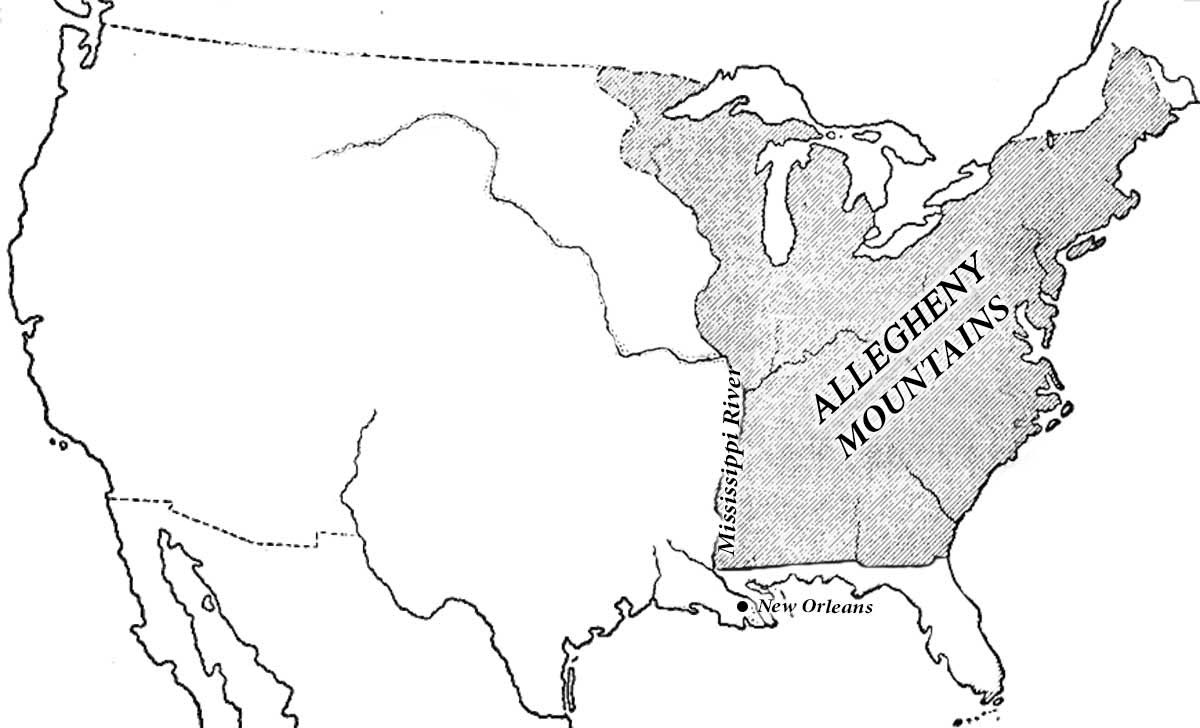
The United States of 1801 included 16 states and about 5 million people -- far fewer than the 50 states and 300 million people of the late 20th century. (University of South Florida)
The land was not crowded. Most people at the time were farmers who lived far away from each other. But some Americans wanted more space. They moved west, over the Allegheny Mountains. Many settled in today’s states of Kentucky and Tennessee.
Traveling was difficult. Few roads existed. People moved on foot, with horses, or by boat.
“There is on the globe one single spot, the possessor of which is our natural and habitual enemy. It is New Orleans...”
Thomas Jefferson
Third U.S. president
Boats were especially important. Boats moved supplies from the East Coast of the U.S. to western settlers. And Americans used boats to send crops, furs and other goods to international ports. In other words, boats were like trucks, and rivers were like highways.
The major rivers in the U.S. at the time all flowed into the port of New Orleans. As a result, New Orleans was one of the most important places on the continent for Americans. The president, Thomas Jefferson, noted that over one-third of America’s goods passed through New Orleans to go to market.
There was only one problem. The United States did not own New Orleans.
Who did own New Orleans?
The port of New Orleans was part of a much larger territory called Louisiana.
For many years, France owned Louisiana Territory. In 1762, France gave the territory to Spain.
In 1800, Spain secretly gave the territory back to France.
The situation made President Jefferson uneasy.
Unlike Spain, France was very powerful. Jefferson was afraid France would limit Americans’ ability to use the port of New Orleans. So Jefferson offered to buy it. The French leader, Napoleon Bonaparte, refused.
Napoleon had a plan to extend the French empire into North America. First Bonaparte sent French troops to the Caribbean island of Saint-Domingue (today’s Haiti). He wanted to secure the island’s valuable sugar trade.
President Jefferson grew even more worried. He tried again to buy the port of New Orleans. This time American diplomats increased the offer to $10 million.
Bonaparte again refused.
But then the French leader received a surprise. In Saint-Domingue, former slaves defeated the French troops. So Bonaparte sent more French troops to Saint-Domingue. The former slaves defeated that army, too.
“I was born a slave, but nature gave me a soul of a free man...”
General Toussaint L'Ouverture
Led an army of enslaved people to defeat the French and secure independence
Napoleon realized that France would not take Saint-Domingue and profit from the sugar trade. It could not support a French empire in North America. And it needed money for the wars it was fighting in Europe.
So Napoleon called American diplomats to an office in Paris. A French official asked if the U.S. would like to buy New Orleans after all – as well as the rest of Louisiana Territory. France accepted $15 million for the entire area: over 2 million square kilometers. The cost was very low, about four cents an acre.
In the U.S., we call the deal the Louisiana Purchase. Historian Joseph Ellis describes it as “the greatest achievement of the Jefferson presidency and … one of the most consequential executive actions in all of American history.”
What made Napoleon give up on his dream of a French empire in North America?
Why was the Louisiana Purchase so important?
The Louisiana Purchase doubled the size of the U.S. at the time. Even today, the land accounts for about one-third of America’s territory. It includes all or part of 15 current U.S. states.
The Louisiana Purchase also includes the Mississippi River – one of the biggest rivers in North America – and all the rivers that feed the Mississippi.
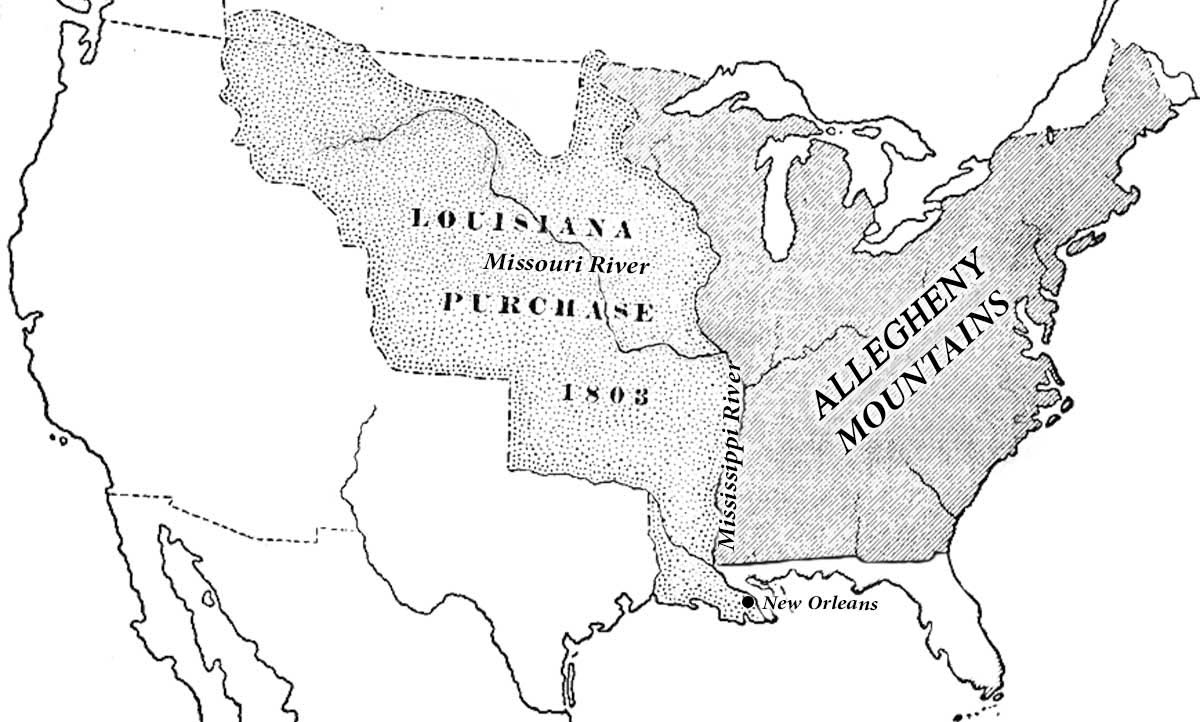
Louisiana Territory extended from the Gulf of Mexico to Canada, and from the Rocky Mountains to the Mississippi River. (University of South Florida)
President Jefferson understood the value of the area. The fertile, diverse territory was good for farming and trade.
Jefferson believed it was good for America’s system of government, too. He hoped the U.S. would remain an agricultural country, populated mostly by farmers who governed themselves. He spoke of the country as an “empire of liberty”— even though about one in five people living in the U.S. was a slave.
The Louisiana Purchase was also important for U.S. foreign relations. It ended the French presence in North America. It increased American political and economic stability. And it established the U.S. as one of the largest countries in the world, with enough natural resources to be an international power.
But what – and who – was in Louisiana Territory?
The American diplomats in Paris who bought Louisiana Territory were surprised and delighted by Napoleon’s offer. But they did not really know what they were buying. The exact borders of Louisiana Territory were disputed. And few Europeans – let alone Americans – had traveled there.
“Shall we without a struggle, give up our homes, our lands ... I know you will say with me, Never! Never!”
Tecumseh
Shawnee chief who united a large group of Native Americans to oppose the U.S.
But the area was not empty: native people had lived there for centuries. A number of American Indian groups – including the Osage and Sioux – hunted, traded, fought and made their homes across the territory.
President Jefferson was aware of these Indian groups. But he did not offer them any money for the land. Instead, he wanted the native people to enter into treaties with the U.S. government.
Americans would offer them protection and trade. The native people, he hoped, would give up control of their land, adopt American farming practices and make alliances with the U.S. government against England and Spain.
In the meantime, he believed the U.S. government had “absolute authority” over Louisiana Territory.
What were Jefferson's thoughts about the native peoples in Louisiana Territory?
Jefferson sends explorers west
On the same day U.S. newspapers announced the Louisiana Purchase, Jefferson officially sent his personal secretary to explore the country’s new land.
Meriwether Lewis was 29 years old. He grew up near Jefferson’s home in the southeastern state of Virginia; his father and Jefferson were friends.
“This day I completed my thirty first year... I reflected that I had as yet done but little, very little indeed, to further the hapiness [sic] of the human race, or to advance the information of the succeeding generation. ... [I] resolved in future, to live for mankind, as I have heretofore lived for myself.”
Meriwether Lewis
Writing in his journal on the evening of his birthday
As a young man, Lewis became a soldier in the U.S. army. He learned to take care of himself in the wilderness, to observe his environment and to lead groups of men.
When Jefferson took office, he asked Lewis to live with him at the president’s house. Jefferson wanted Lewis’ help with political duties. He was also preparing Lewis for an important mission.
For a long time, Jefferson had wanted to send a team of explorers west. Mostly Jefferson was curious. He wanted to know about the geography, plants, animals, rocks, weather and native people of North America beyond the Mississippi River.
“Ocian in view! O! the Joy!”
William Clark
Writing in his journal at the estuary where the Columbia River starts to meet the Pacific Ocean. "Ocian" was Clark's original spelling.
He also wanted to establish good relations and trade with Indian tribes.
And, he hoped to find an all-water route across the continent – what some called the Northwest Passage. Such a route could make trade easier and more profitable for some Americans.
In a stroke of good luck for Jefferson, France offered to sell Louisiana Territory just before Lewis left on his journey. Much of his trip would be over land the U.S. now claimed. The rest – through today’s states of Montana, Idaho, and Oregon – was uncharted and largely unknown to Americans. The journey remains one of the great adventure stories in U.S. history.
What were Thomas Jefferson's goals in sending explorers to the West?
Meriwether Lewis, William Clark and the Corps of Discovery
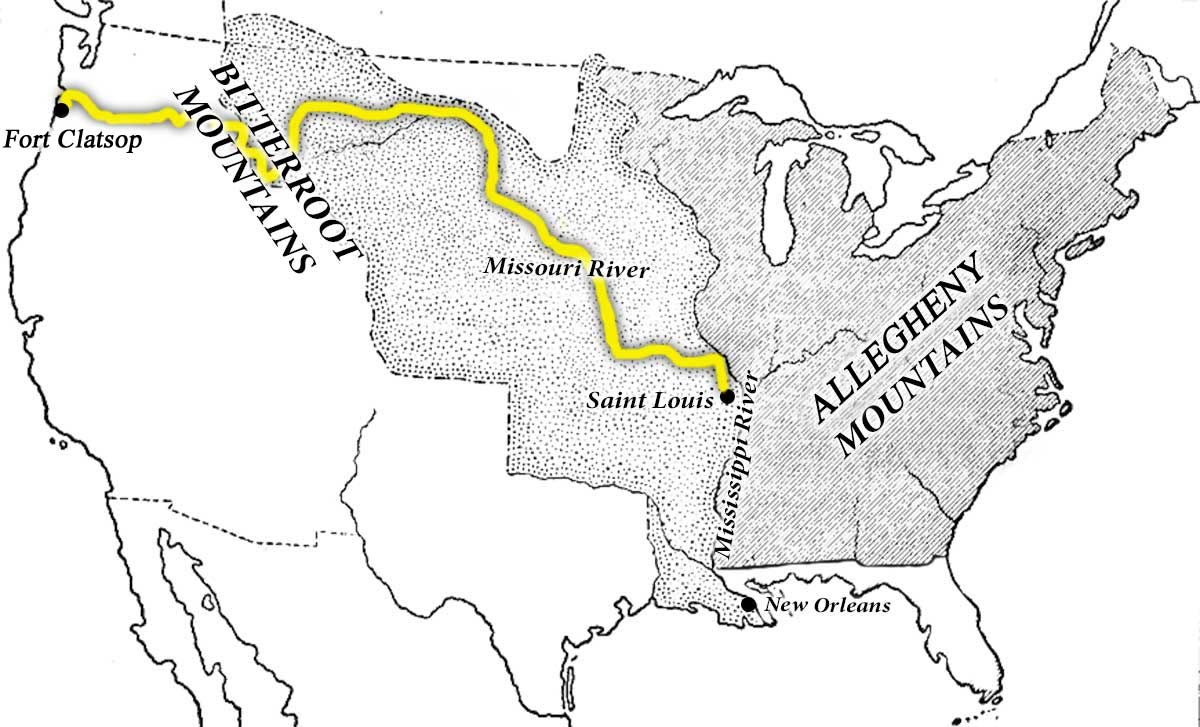
The Corps of Discovery traveled about 6,000 kilometers in 17 months from the current Midwest to the Pacific Ocean. (University of South Florida)
Lewis asked a friend from the army to co-lead the trip, or expedition. William Clark was also from a well-known Virginia family. But he had moved to the western state of Kentucky.
Clark asked several other young men from Kentucky to join them, as well as his slave, York. Lewis and Clark also recruited soldiers from western army posts.
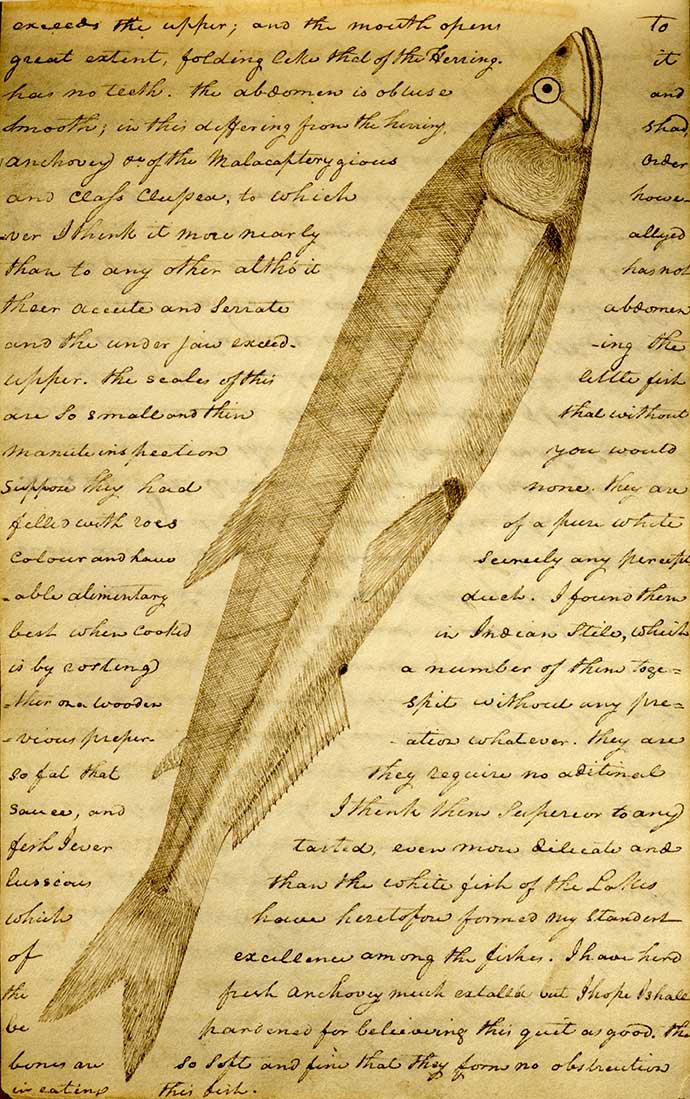
A page from Lewis' journal describing a candlefish (Missouri History Museum, St. Louis)
In the end, 33 people were part of the permanent group. It was called the Corps of Discovery. The word “corps” suggests the military nature of the group: the U.S. government paid for the trip, and Captains Lewis and Clark led it like a military operation.
Historian Jeff LaRock of the National Park Service calls the Corps of Discovery “basically a Special Forces team.” He points out that each member had at least one special skill: hunting, fixing guns, making things out of iron, navigating rivers or interpreting French or native languages.
When the Corps started the expedition in May 1804 near St. Louis, Missouri, they had several boats and a few horses. The load was heavy: they brought guns and ammunition, scientific instruments, things to trade with the Indians, food and even a writing desk.
Lewis’ journals, along with those of other members of the Corps of Discovery, remain one of the most important contributions of the expedition.
Imagine you are William Clark, choosing members of the Corps of Discovery. What qualities do you want in your travel companions?
For the most of the journey, the Corps of Discovery traveled upstream. First they pushed, pulled or dragged the boats up the Missouri River into today’s state of North Dakota.
There, they spent the winter with the Mandan Indians. They also added several new interpreters to the group: a French-Canadian fur trader and one of his two wives, Sacagawea, a young Native American woman from the Shoshone tribe. Over the winter, Lewis helped deliver Sacagawea’s baby, whom she carried for the rest of the journey.
Lewis wrote in his journal that “[Sacagawea], we find, reconciles all the Indians, as to our friendly intentions — a woman with a party of men is a token of peace.”

Sacagawea translated native languages for the Corps, showed them plants to eat and helped identify landmarks she recognized from her childhood.
The following spring, when the weather turned warm, the group continued pushing up the Missouri River. They entered an area unknown to Americans, at the western edge of the Louisiana Purchase. In the words of National Park Service ranger Jeff LaRock, “After Fort Mandan, they’re walking off the map.”
Montana landscape
The Corps of Discovery traveled through today’s state of Montana. On the eastern side, they enjoyed flat land, mild weather and plenty of buffalo and deer to eat. (They did not enjoy the mosquitoes or the prickly pear cactus that tore their soft leather shoes and pierced their feet.)
On the western side, they came to a rock wall of mountains.
Sacagawea’s tribe, the Shoshone Indians, helped them cross what are today’s Bitterroot Mountains between Montana and Idaho. The passage was the most difficult part of their journey. It showed them that President Jefferson’s dream was not a reality: there was no all-water route across the continent, at least not on the route Lewis and Clark took.
Finally, the Corps of Discovery reached the Columbia River, where they quickly sailed downstream through present-day Oregon to the Pacific Ocean.
Why was Sacagawea an important member of the Corps of Discovery?
The effects of the journey
Lewis and Clark’s complete journey took a little over two years and covered over 11,200 kilometers. When they returned to St. Louis, Missouri in September of 1806, the people who lived there greeted them with relief and interest. Many believed the group had died.

Click or tap to activate gallery. The Corps of Discovery documented at least 120 animals and 180 plants that were new to science (Lewis and Clark on the Great Plains: A Natural History by Paul A. Johnsgard, University of Nebraska Press).
The Corps of Discovery not only survived, but brought valuable information. They described over 300 kinds of plants and animals that were new to science. They developed a map of today’s Pacific Northwest. They recorded weather and geographical data. And they wrote their ideas and observations about the Native American tribes they met.
Back in Washington, DC, President Jefferson was eager to learn and share the information. All of it was useful to the U.S. government, even if the lack of a Northwest Passage was bad news.
The information also helped American and European settlers, trappers, traders and explorers push further into the western part of the continent.
What were the effects of the journey by the Corps of Discovery?
Oregon landscape
In most places, Lewis and Clark were greeted as heroes. Americans admired their courage and ability to cross the continent.
Jefferson rewarded them with important jobs in St. Louis, Missouri. Clark married, settled there, and became an advisor on U.S.- Indian relations. He also helped educate and raise Sacagawea’s son.
Lewis had a more difficult time. He died of a gunshot wound three years after he returned from the journey. His friends William Clark and Thomas Jefferson believed Lewis killed himself. Most historians agree.
Lewis wrote on his 31st birthday that he had not contributed much to the world. But he left an important record of his experience that shaped U.S. history. His aims were good: to advance the happiness of the human race, and to add to the knowledge of the next generation.
His journey achieved these goals for many. But it also threatened and ultimately destroyed much of the land and culture of Native American people.
And it had an additional consequence Lewis likely never imagined. The Louisiana Purchase and the Corps of Discovery created the possibility of new western states. Those lands would become a battleground over the issue of slavery.
How was life for Lewis and Clark after they returned from their journey?
Supplementary Videos
- Historian Joseph Ellis describing Napoleon in his bathtub, selling Louisiana.
- Curator Susan Stein of Monticello discussing Jefferson's "empire of liberty."
- Deb Miller of the Montana Historical Society on daily life in a Native American camp.
About the Series
“The U.S. Expands West” is part of the VOA Learning English series “The Making of a Nation.” The series teaches U.S. history by telling the stories of major events and characters from the country’s founding to the present day.
Lesson Plans for Teachers
Credits
Lead writer and editor: Kelly Jean Kelly
Visual producers: Roger Hsu and Richard Hindman
Education specialists: Dr. Jill Robbins and John Russell
Web design and development: Stephen Mekosh and Dino Beslagic
With additional thanks to: Fort Clatsop, Joseph Ellis, Lewis and Clark Interpretive Center, Louisiana State Museum, Montana Historical Society, The Historic New Orleans Collection, Thomas Jefferson’s Monticello
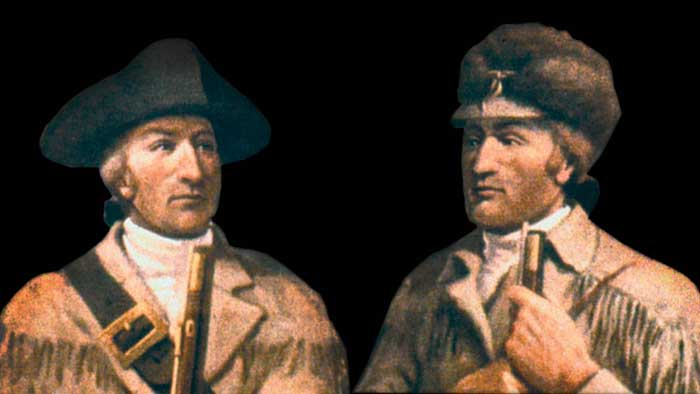
Comments